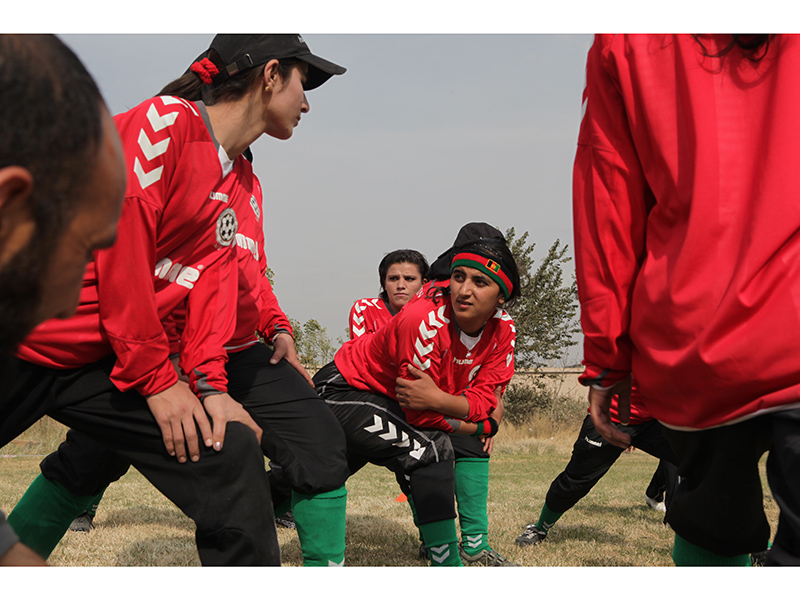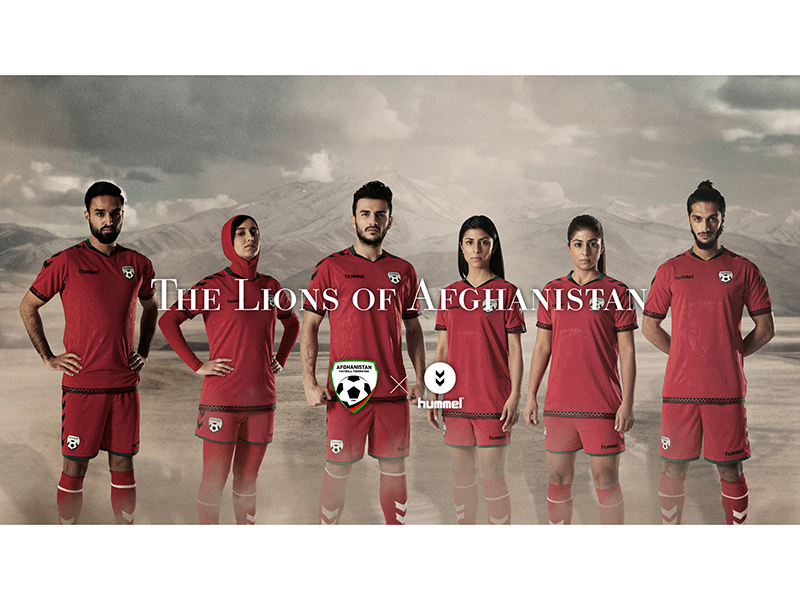“You feel so alone and so unhappy in an asylum camp,” Popal tells PEOPLE. “The women there didn’t have any opportunities, so I encouraged them to come fight their stress and depression by playing soccer.”
In 2011, Popal, then 23, fled her native Kabul after years spent as an outspoken advocate for women’s rights and a founding member of Afghanistan’s first women’s national soccer team.
“I faced so many death threats and warnings that I had to stop my activities for women – otherwise, they said they would kill me and my family,” Popal, now 28, recalls.
But Popal couldn’t give up everything she worked for, so she left her home and family for Denmark in order to keep fighting for women’s rights in Afghanistan and around the globe.
When Popal fell in love with soccer in 2004 at age 16, Afghanistan was still deeply affected by the Taliban era, during which time women’s sports were banned and football stadiums were used for public executions. After watching their brothers play the sport, Popal and three other girls began practicing soccer after hours behind their school’s high walls.
As the group began playing more and in more visible places, it became very clear their community was not ready to embrace their love of the sport.
“People threw garbage and stones at us and warned us that we had to stop playing soccer or they would kill us,” Popal recalls.
Still, the young women refused to give up. Instead of backing down, they stood up – traveling to other schools and institutions to recruit young women to join their sport. With help from the Afghanistan Football Association, they registered eight women’s soccer teams. In 2007, Popal and the top players from around the country were selected to represent Afghanistan as the first national women’s soccer team.

The national team at practice
Courtesy Hummel International
Still facing public disapproval and threats, the team was forced to practice on a field inside a NATO base in Kabul that doubled as a helicopter landing zone.
“While we’d be playing soccer there would helicopters landing – and two or three times there were bomb explosions by the Taliban just in front of the door of the compound,” Popal says.
Despite these challenges, the team persevered, competing in international tournaments and even winning an exhibition game against NATO’s women’s team. Popal used her public position as the national team’s captain to raise awareness about women’s rights issues.
“I was organizing soccer activities for women and using soccer as a tool to stand for our rights, and I appeared on media to raise awareness about women’s equality,” she says.
But the backlash became so severe that Popal was forced to leave her home and family in 2011. She sought asylum in Denmark thanks to the support of Hummel, a Danish athletic company that had designed special uniforms for Popal’s team that would allow some members to be covered from head to toe in keeping with cultural norms.
She now works with Hummel and an international NGO to ensure that those who come after her won’t have to fight in the same way she did by organizing soccer associations for both genders in schools around the world.
On Tuesday, Hummel unveiled the newest version of the Afghan national team’s uniform with a new component that covers the players’ hair, eliminating the need for the players to wear a hijab during games.

Official portrait of members of Afghanistan’s national soccer teams
Courtesy Hummel International
“It was very challenging for our teammates because our country is Islamic and the government and the people really want the women’s national team to wear a hijab,” Popal explains. “But our team was traveling to South Asian countries and it was very hot there and very difficult to play with big scarves around our necks and heads.”
Popal says the new uniform will allow the team to be more agile on the field and serve as a source of pride for the women who fought to bring the sport to the women of their country.
“The uniform launched on International Women’s Day for women’s empowerment,” Popal says. “And the uniform means a lot for the national team of Afghanistan – especially for the women – because they fought to wear it and it says, ‘I am a woman and I’m able to play under the flag of my country.’ “



